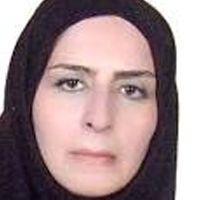A Case of X-Linked Hypophosphatemia: Exploring the Burden in a Single Family and the Significance of a Multidisciplinary Approach
Published on: 24th September, 2023
A 46-year-old lady was diagnosed clinically with X-linked hypophosphatemia (XLH) with a rare pathogenic variant detected using exome sequencing. Phosphate-regulating endopeptidase homologous X linked (PHEX) is normally expressed in osteoblasts and osteocytes, and senses phosphate regulation. More than 1000 PHEX variants have been detected to date, which are caused by missense, nonsense, and frameshift mutations in addition to splice variants and copy number changes. The aberration in the PHEX gene leads to the upregulation of fibroblastic growth factor 23 (FGF23), which leads to defects in phosphate metabolism. This results in impaired bone growth and mineralization, short and disproportionate stature, leg bowing, musculoskeletal pain, spontaneous dental abscesses, rickets, and osteomalacia in XLH patients. The spectrum of manifestations differs between pediatric and adult patients. In our case study, two of the patient’s children started showing symptoms at a younger age, unlike their mother. Timely diagnosis and the start of treatment would help in their better management and improved quality of life.
Circulating Levels of Fibroblast Growth Factor 23 Selective for C-Terminal (FGF23-CT) in Hemodialysis Patients
Published on: 13th October, 2023
Background: In hemodialysis patients, fibroblast growth factor 23 (FGF23) has reportedly been associated with the development of cardiovascular complications and a high risk of mortality. Our objective here was to study the cleavage characteristics of FGF23 in hemodialysis patients. Methods: This study design is a cross-sectional observational investigation of three facilities without intervention. To assess FGF23 concentrations, we obtained plasma samples from 97 hemodialysis patients before the hemodialysis session and from 16 healthy volunteers. We measured the FGF23 C-terminal fragment and intact FGF23 concentrations by using a commercial enzyme-linked immunosorbent assay. Results: Serum levels of the FGF23 C-terminal fragment were 189 ± 121 ng/mL in healthy volunteers and 306 ± 206 ng/mL in hemodialysis patients. The ratios of intact FGF23 to total FGF23 were 0.03 ± 0.03 in healthy volunteers and 0.44 ± 0.28 in hemodialysis patients. The ratios were positively correlated with levels of inorganic phosphate in hemodialysis patients (p < 0.001, r = 0.52). Conclusion: We measured actual levels of the serum FGF23 C-terminal fragment in hemodialysis patients by using a new commercial kit for the first time. The ratio of intact FGF23 to total FGF23 was lower in healthy controls than the ratio in hemodialysis patients. The cleavage percentage of FGF23 was considerably higher in both groups of subjects than previously thought. We suggest that hyperphosphatemia in hemodialysis patients was associated with impaired cleavage of FGF23.
Serum Levels of the C-terminal Fragment of Fibroblast Growth Factor 23 (C-FGF23) and Hepcidin in Patients with Hemodialysis Undergoing Treatment with a Proline Hydroxylase Domain (PHD) Inhibitor
Published on: 14th October, 2024
Background: We previously reported, for the first time, serum levels of the C-terminal fragment of fibroblast growth factor 23 (C-FGF23) in patients undergoing hemodialysis (HD). Most HD patients have undergone treatment with either recombinant erythropoietin (r-EPO) or hypoxia-inducible factor (HIF) proline hydroxylase domain (PHD) inhibitor, both of which stimulate FGF23 production and cleavage. Methods: This cross-sectional observational study involved analyzing measuring FGF-related parameters and comparing results for subgroups of patients who received either r-EPO and or a PHD inhibitor. Results: No significant difference was observed for iron-related parameters or serum hepcidin levels in both subgroups of patients. Significant differences were found for certain FGF-23-related parameters. Conclusion: Both FGF23 production and cleavage were stimulated more in patients treated with the PHD inhibitor than in patients treated with r-EPO.
















